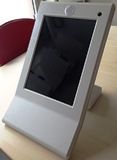How Does the System Work?
The system consists of a data collection terminal to be installed at the main entry-exit points and information collection software running on it, NNARSOFT software running on a PC connected to this terminal that evaluates the collected information and calculates the payroll-based attendance values, and a contactless card reader such as Proximity or Mifare. Personnel ID cards consist of a unique number for each employee and barcodes and graphics containing the information requested by the company. The number contained in the card is associated with the personnel registration number in the NNARSOFT software. By scanning these cards on the card reader terminals by the personnel at the time of entry and exit, movements are collected on the terminals. The information collected on the terminals is transferred to the NNARSOFT program online or offline. Even if there is a power outage during the transfer of information from the terminal to the PC, no data loss occurs thanks to the communication protocol that enables communication between the terminal and the PC. After the entry-exit information is transferred to the NNARSOFT program on the PC, the evaluation program is activated. The program evaluates the personnel movements according to the company's working principles and shift structure, calculates the attendance information that will form the basis for the payroll, and produces analysis and statistical reports for each level of user. If desired, it automatically transfers the attendance information to the payroll program used by the business.
Work Types
This section is where the main titles used by the company in the Payroll, i.e., many definitions such as Normal Work, Absence, Overtime, Annual Leave, etc., are made without limit, and the distributions between these definitions are made. It is the area where the definition of whether the fractional numbers that will appear after the attendance calculation, Example: 00:41 – 05:43 – 01:14, will be subject to rounding up or down is made. It is especially important that this part is entered correctly during the definitions. Shifts: Generally, there are 3 active shift types and 1 free shift definition. To explain these briefly with an example: DD, i.e., Day by Day work. In this shift type, a full day is between 00:00:01 and 23:59:59, and this is the area where the hours of people who will work within this time range are defined as Normal Work or Overtime. Early Entry, Late Arrival, Early Exit, and Late Exit Tolerances are defined separately for each shift from this area.
Personnel Information
An information file is opened for each personnel, tracked on a registration number basis. In this section, many similar information such as work, leave, identity, personal , address ,education, clothing, salary, thoughts, etc., which form the basic structure of the human resources product, are tracked in detail. The person's old work information can be archived and stored, and can be used when desired. Thanks to the tracking of information such as position, profession, and education department under a coding system, all kinds of statistical information about the personnel working in the company can be obtained.
Annual Leave
Annual leave is parametric, and each company has the opportunity to calculate and print out according to this definition by entering SENIORITY years and days as requested. It provides the opportunity to view and print the total entitled leave, used leave, and remaining leave very simply and quickly.
Weekend Deduction Parameter
As stated in the labor law, this parameter is related to the deduction of the Weekend Entitlement day of a personnel who is absent during the week. What needs to be known here is that if the personnel has worked overtime on the weekend, the program does not perform any operation related to the overtime, it only reduces the entitlement day and continues to process the overtime. Thanks to its flexible structure, companies that deem it necessary can activate this process by defining this parameter according to their own structures.
Movements
The entry-exit movements of the personnel are indexed with the information coming from the terminal, and whether the scanned card is an entry or exit is automatically determined by the program. Incorrect or incomplete card readings are identified and the user is warned. Within the framework of authorizations, it is possible to create manual or collective movements and change movement records.
Attendance
Daily, Weekly, or Monthly calculations can be made. This section is a flexible screen that is completely left to the user's control. On this screen, the distribution of people's working hours inside and outside their entry-exit times will be displayed as Normal work, Absence, Overtime, Leave, etc. After the attendance is calculated, it is possible to make changes on the Personnel's Post, Shift, Daily Leave, Hourly Leave, and Entry-Exit without switching to any other screen. By determining whether the overtime worked is really correct from the overtime approval papers and confirming it from this screen, the company is prevented from making overpayments.
Lists
In addition to the standard lists consisting of frequently used general lists, there is a flexible reporting opportunity related to attendance that people can create according to their own requests. Filtering is left to the user in all reporting screens and has a flexible structure. In all lists, it is possible to select any printer on the network. Printouts can be taken as screen, printer, excel, Word, html, txt or email.
Multiple Company
There is the possibility of working on more than one company basis at the same time, and integration and information integrity are ensured between the companies worked with. Information belonging to one company can be copied to another company. Authorization Definitions and Security Password and authorization definitions can be made for all users. Only a person with ADMIN authorization can make authorization and user definitions.
Enterprise Model
The additional module program that allows reports to be received from the regions by accessing the scattered data of the Attendance program installed in various Provinces and Districts and with online communication, using query criteria such as registration number, department etc., if requested from the Center. Integration with Payroll Programs: Information can be transferred to or received from any type of payroll program used within the company in the desired format. Many of these include SAP, IBSA, Opera, Datasoft, Mega, Mikro, Logo, Eta, Promax, Netsis, Special software etc.










